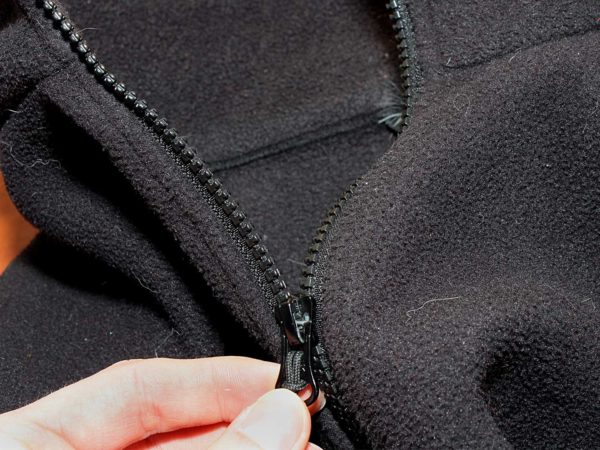Microfiber Menace?
I’ve heard that microfibers from fleece jackets are being released into the environment and find their way into oceans, rivers and lakes and into the fish and seafood we eat. How harmful to health are they?
Andrew Weil, M.D. | June 6, 2017

It is true that microfibers – microscopic plastic fibers less than a millimeter (0.039 inches) long – from fleece clothing are accumulating in the environment to an alarming degree. A 2011 study headed by Australian ecologist Mark Anthony Browne documented that 85 percent of the human-made debris found on shorelines throughout the world are microfibers from nylon and acrylic used to make clothing.
Browne and his team also found that some 1,900 individual fibers are rinsed off a single synthetic garment every time you wash it. When water from washing machines drains, it goes to wastewater treatment plants and then into the environment, carrying with it the microfibers that have been rinsed off clothes but are too tiny to be filtered out of the water. These fibers have ended up in table salt in China, in Arctic waters and in fish caught off the California coast. Other researchers have found microfibers in fish from the Great Lakes as well as in seafood from California,
A study from the University of California, Santa Barbara, published in 2016, found that laundering a single fleece jacket releases considerably more than 1,900 synthetic fibers; – the total seen in this study was as high as 250,000 fibers per jacket per washing. The researchers found that older jackets shed more fibers than newer ones and concluded that laundering 100,000 jackets per year, releases into public waterways the equivalent of the amount of plastic in up to 11,900 grocery bags.
The UC team reported that microfibers have been found in aquatic organisms from zooplankton to whales and are especially prevalent in mussels and oysters. They also noted that the surface of microfibers host bacteria, some of which have been linked to human gastrointestinal infections. Surprisingly, the apparel company Patagonia, which makes fleece jackets supported this research.
We don’t know yet what, if any, effect ingesting these tiny plastic particles from the fish and seafood we eat has on human health. I’ve read a quote from a scientist in the field who has stopped eating all fish and seafood, but others have suggested that the benefits of eating fish outweigh the (unknown) risks.
Researchers have suggested we may be able to help curb the problem by washing our fleece garments less often, only when they’re really soiled. Another finding: five times more fibers are released when jackets are washed in a top-load washing machine compared to a front-loader.
Andrew Weil, M.D.
Sources:
Mark Anthony Browne et al, “Accumulation of Microplastic on Shorelines Worldwide: Sources and Sinks.” Environmental Science & Technology, September 6, 2011, DOI: 10.1021/es201811s
Patricia Holden et al, “Microfiber Masses Recovered from Conventional Machine Washing of New or Aged Garments.” Environmental Science & Technology, September 30, 2016, DOI: 10.1021/acs.est.6b03045











